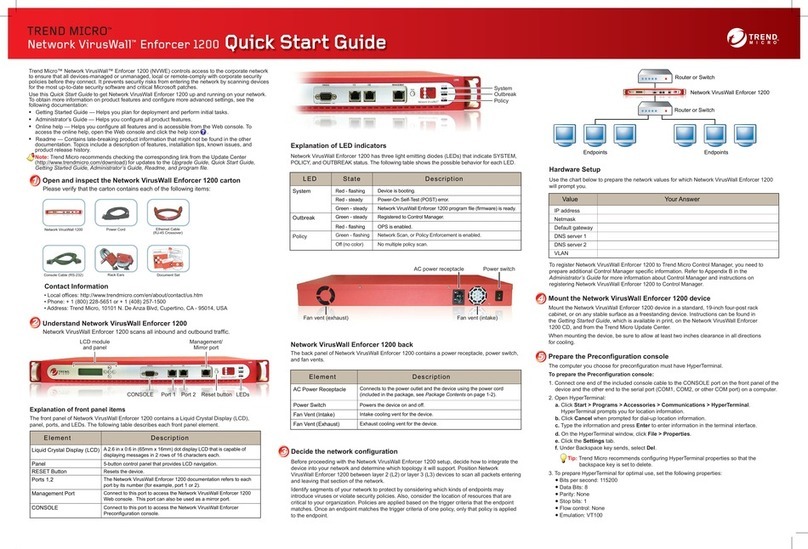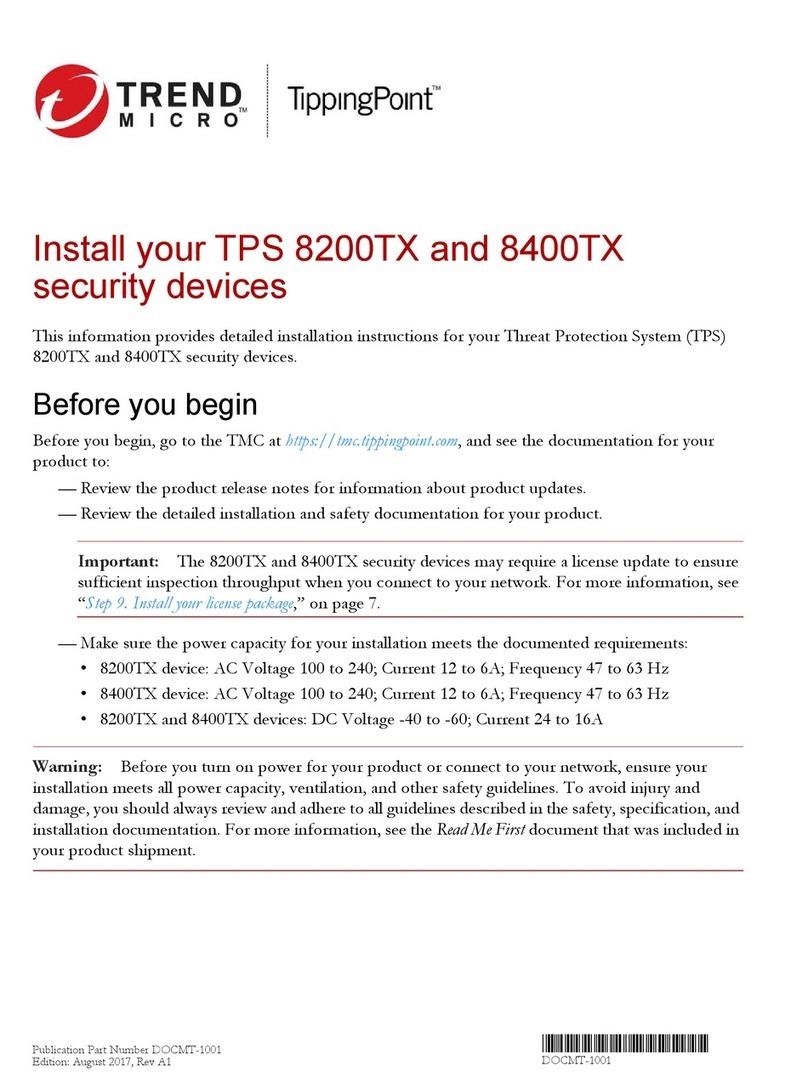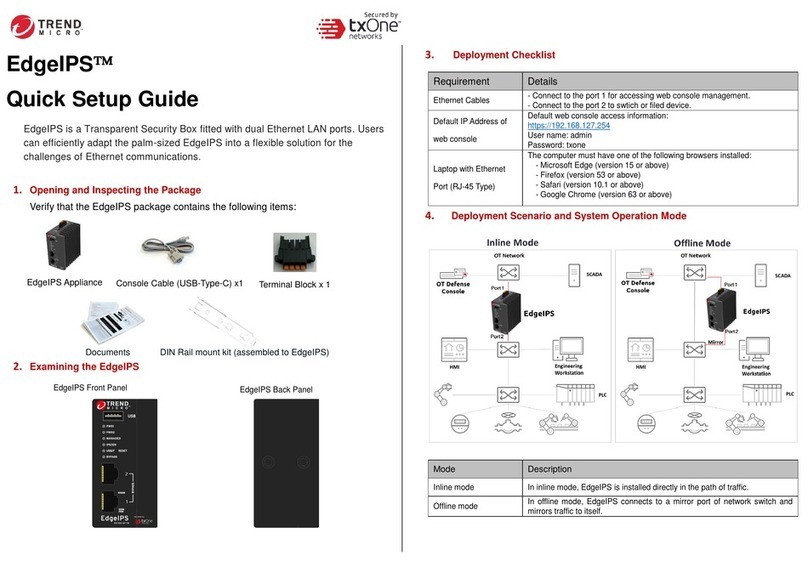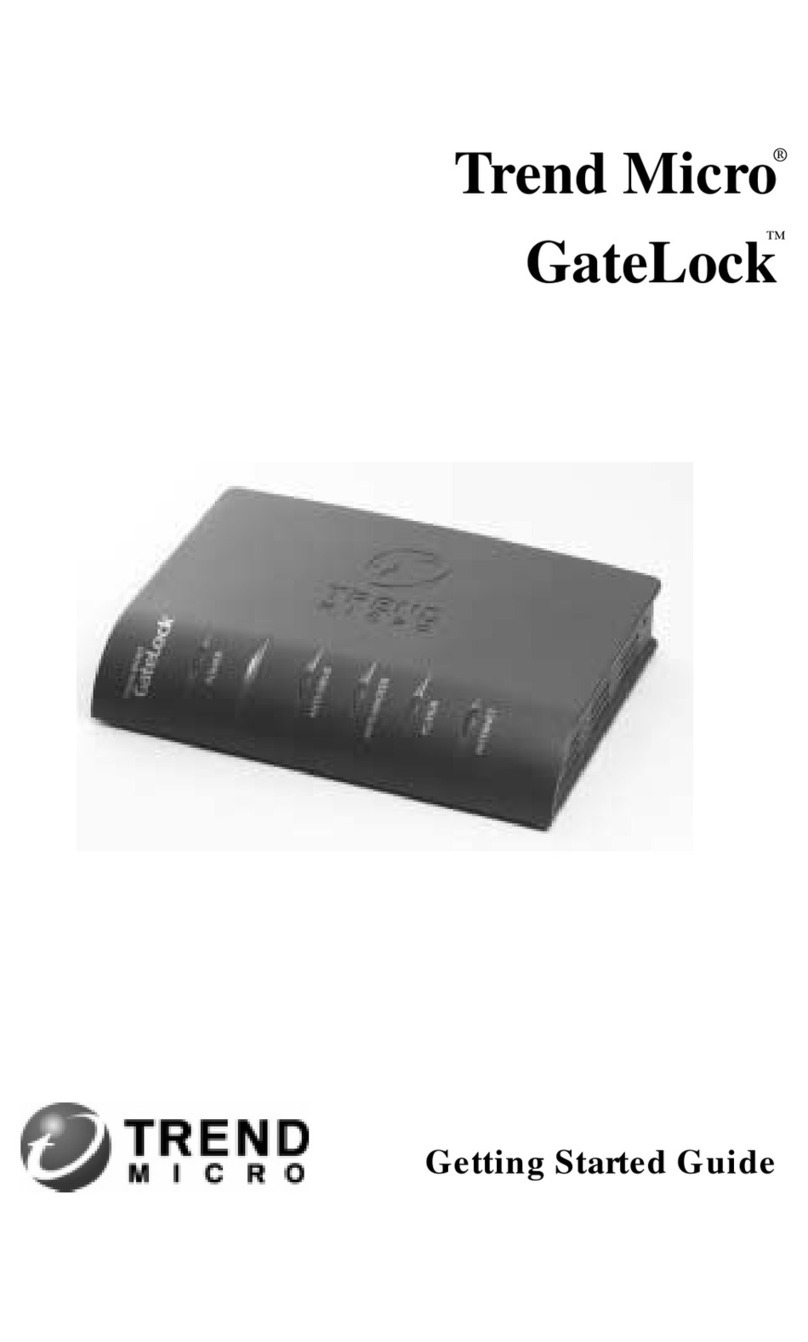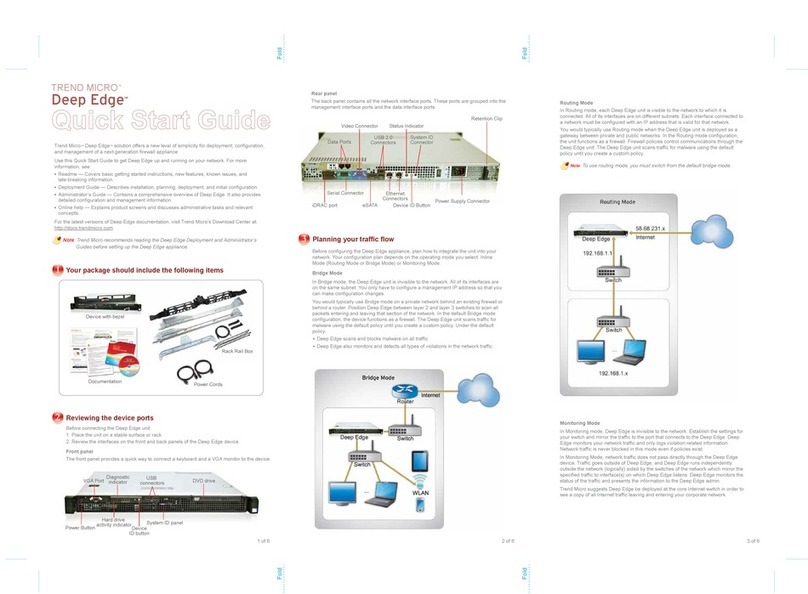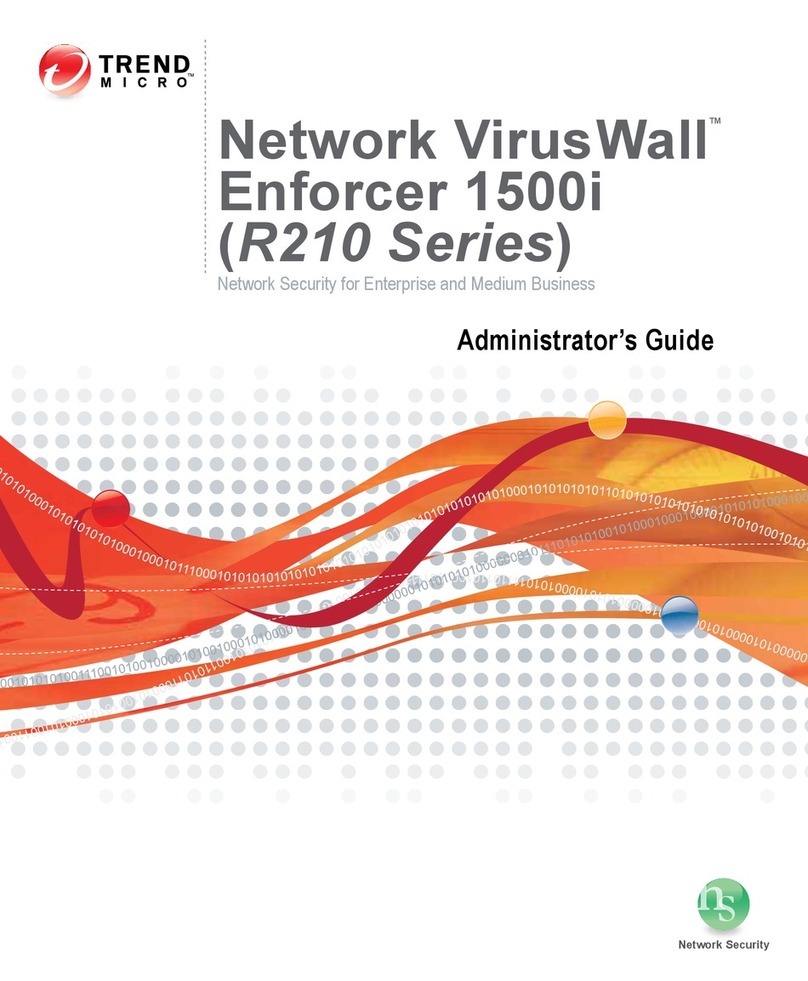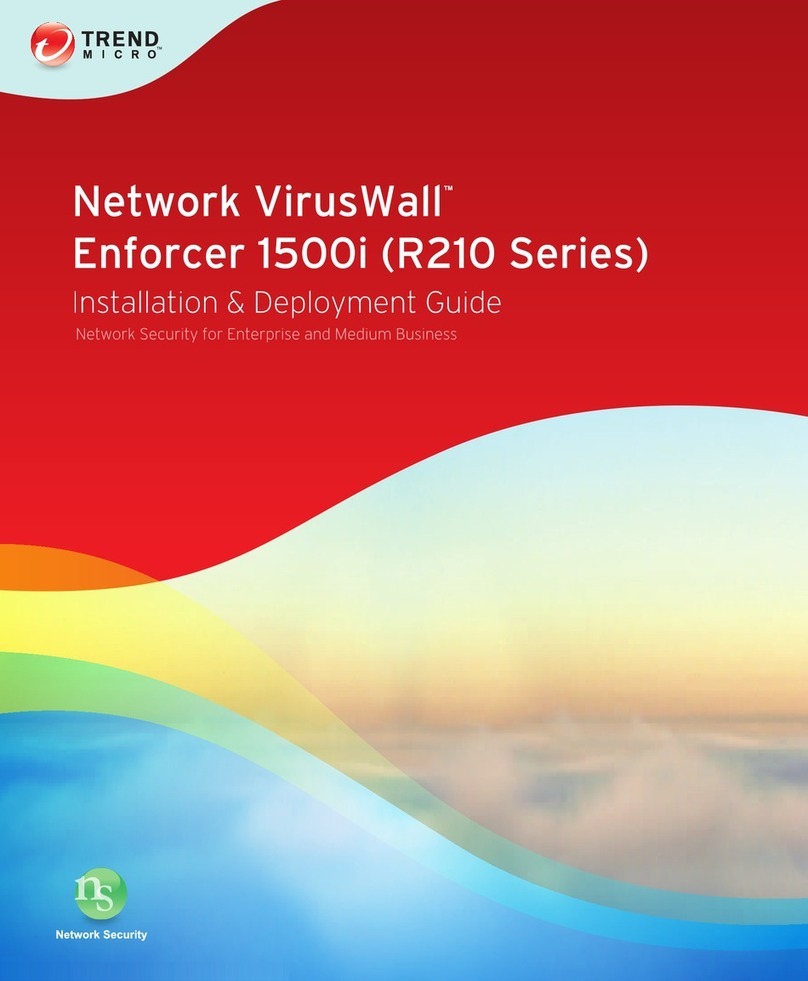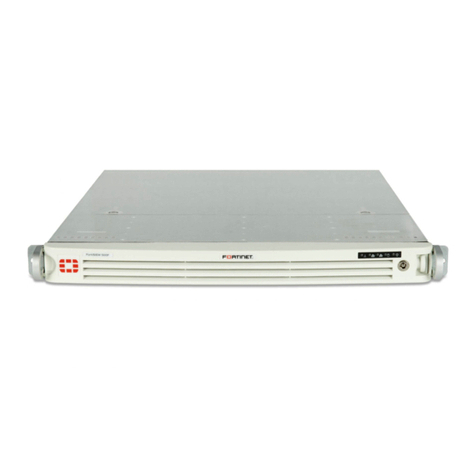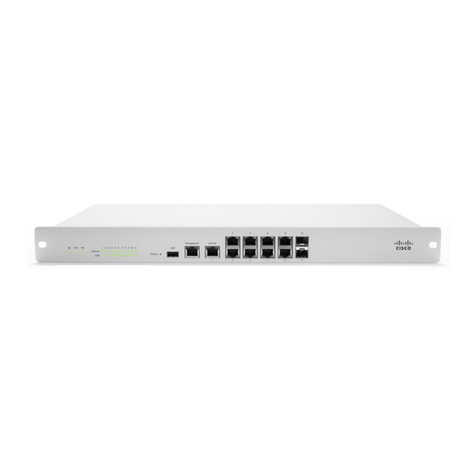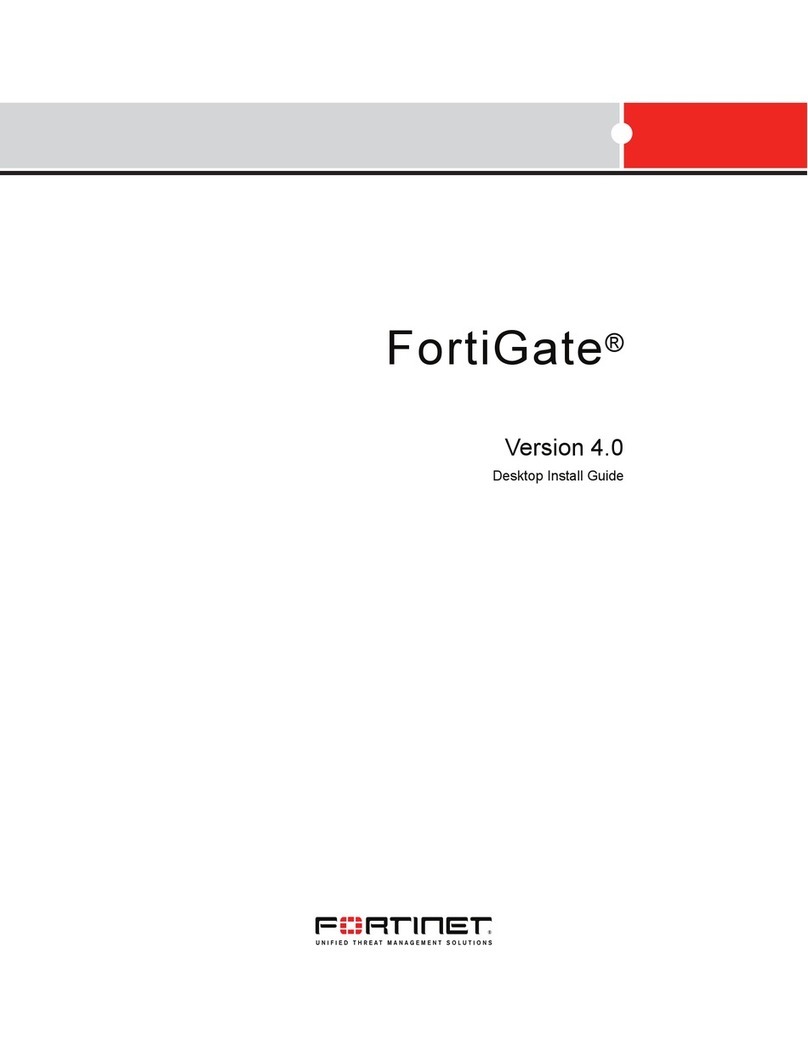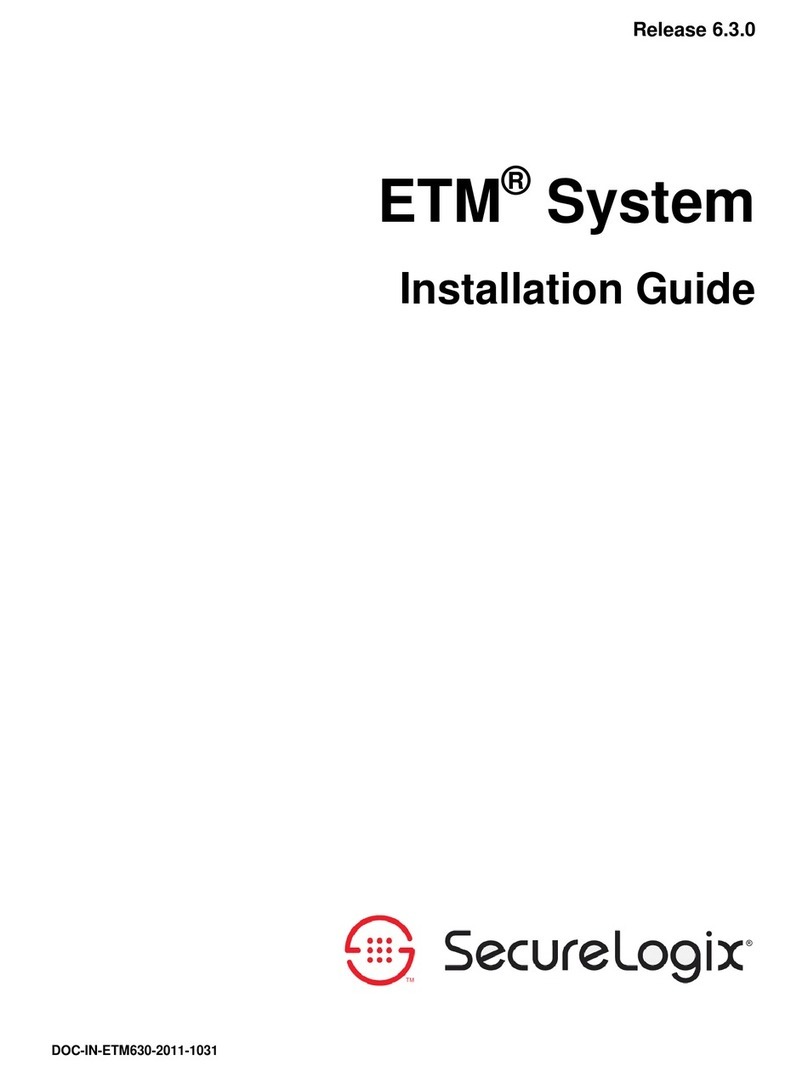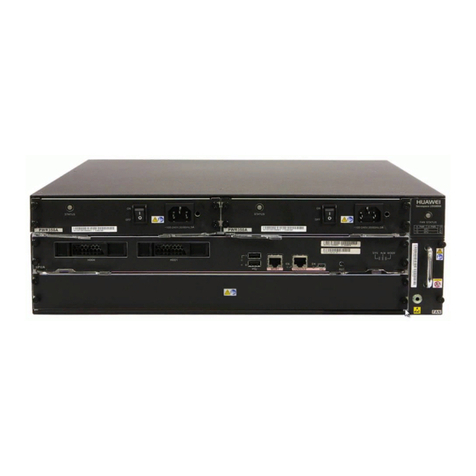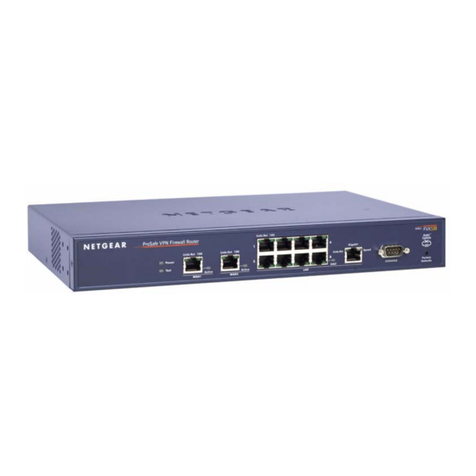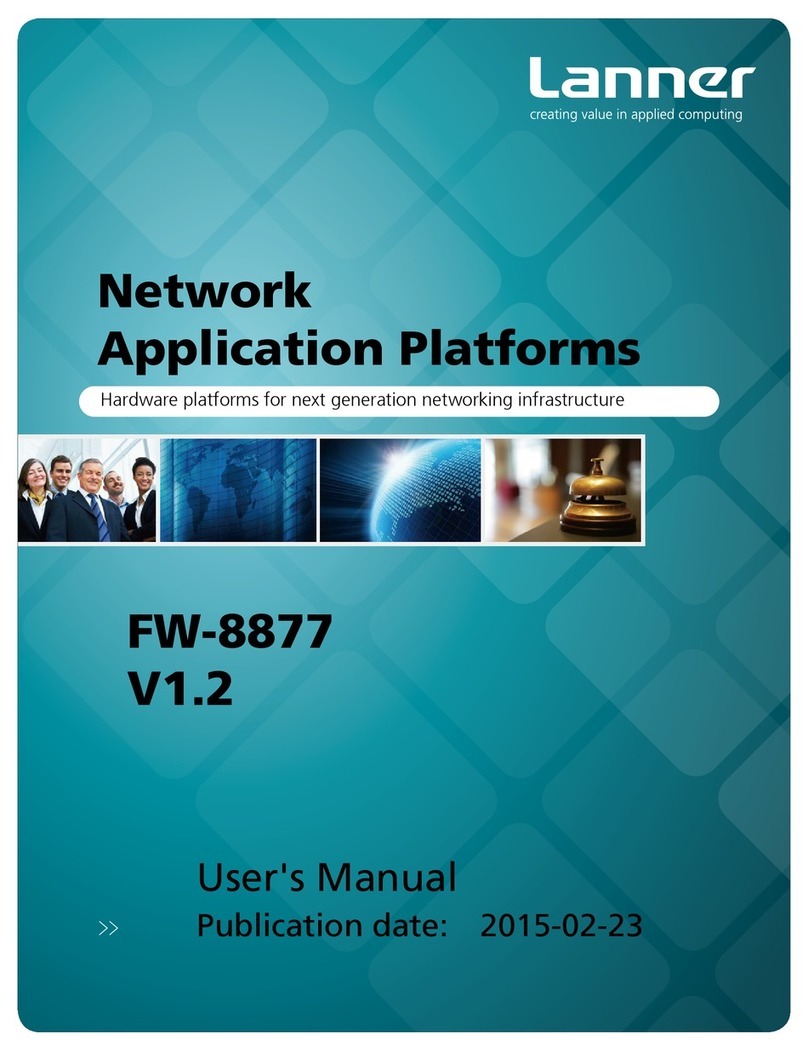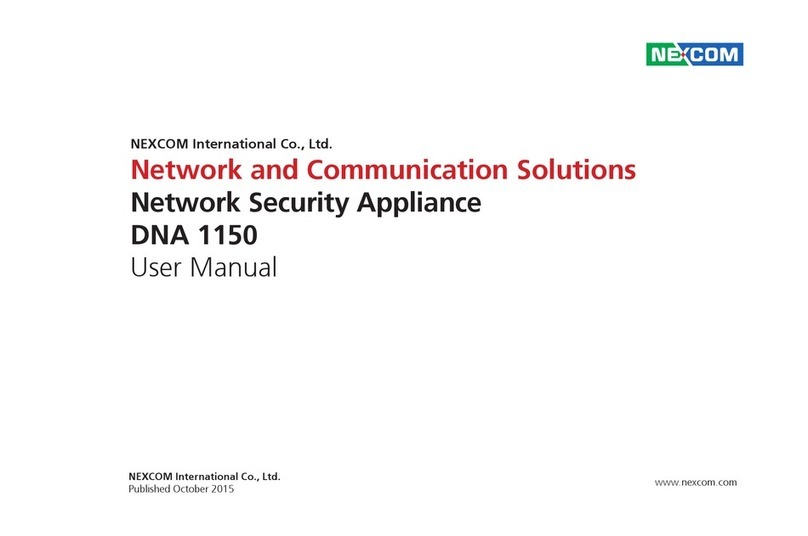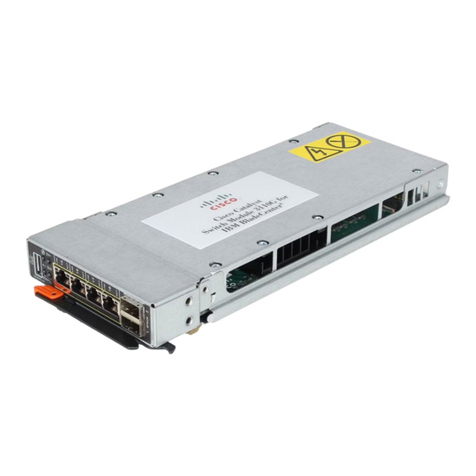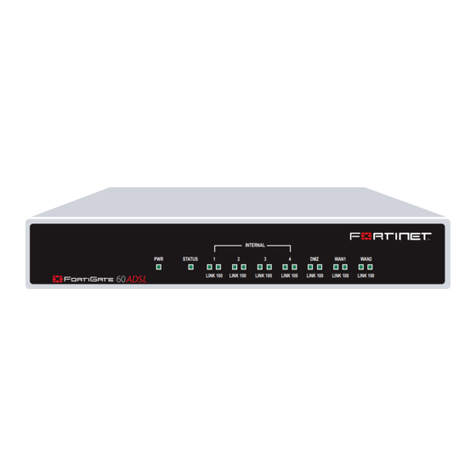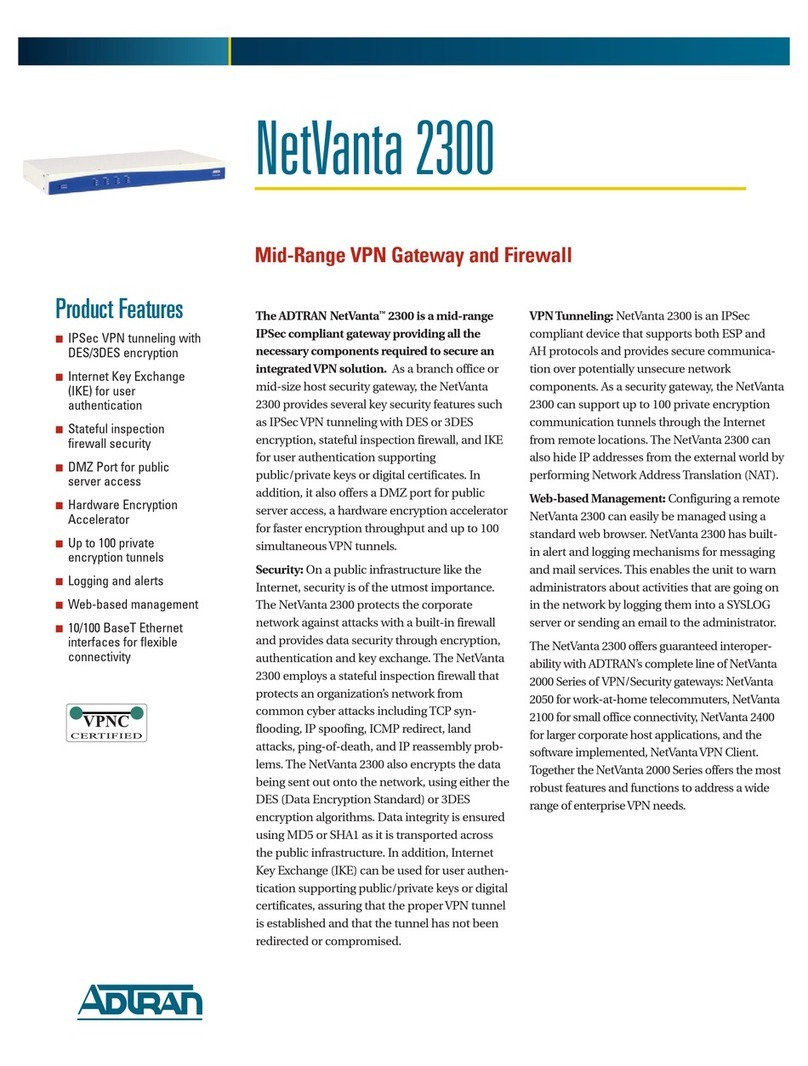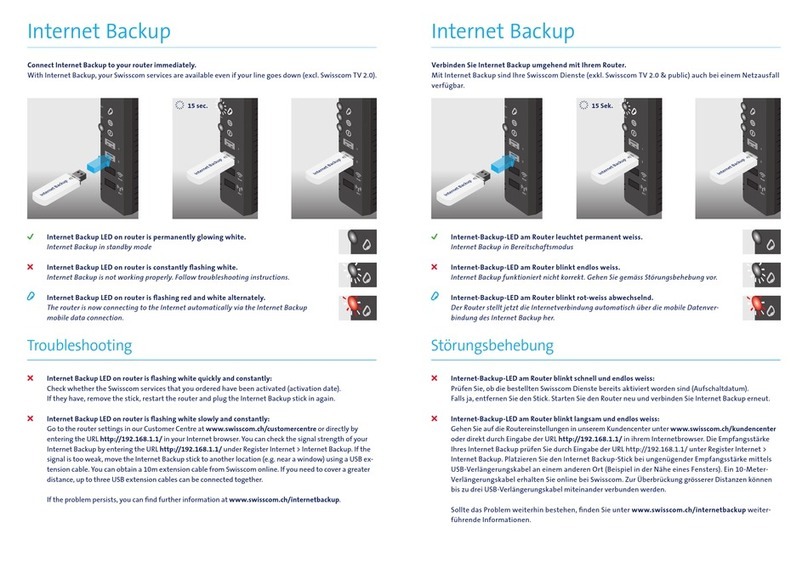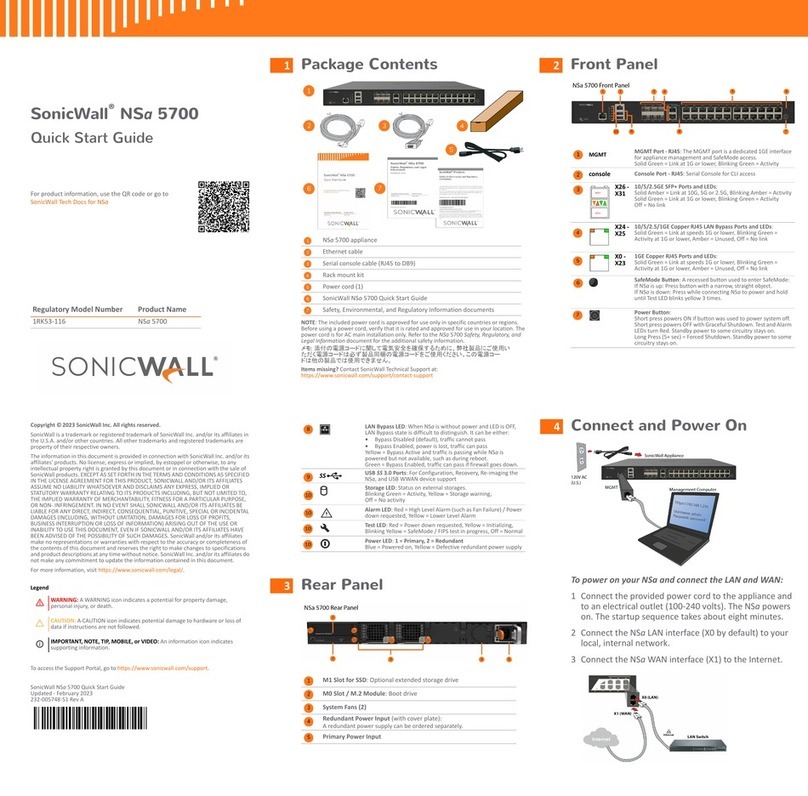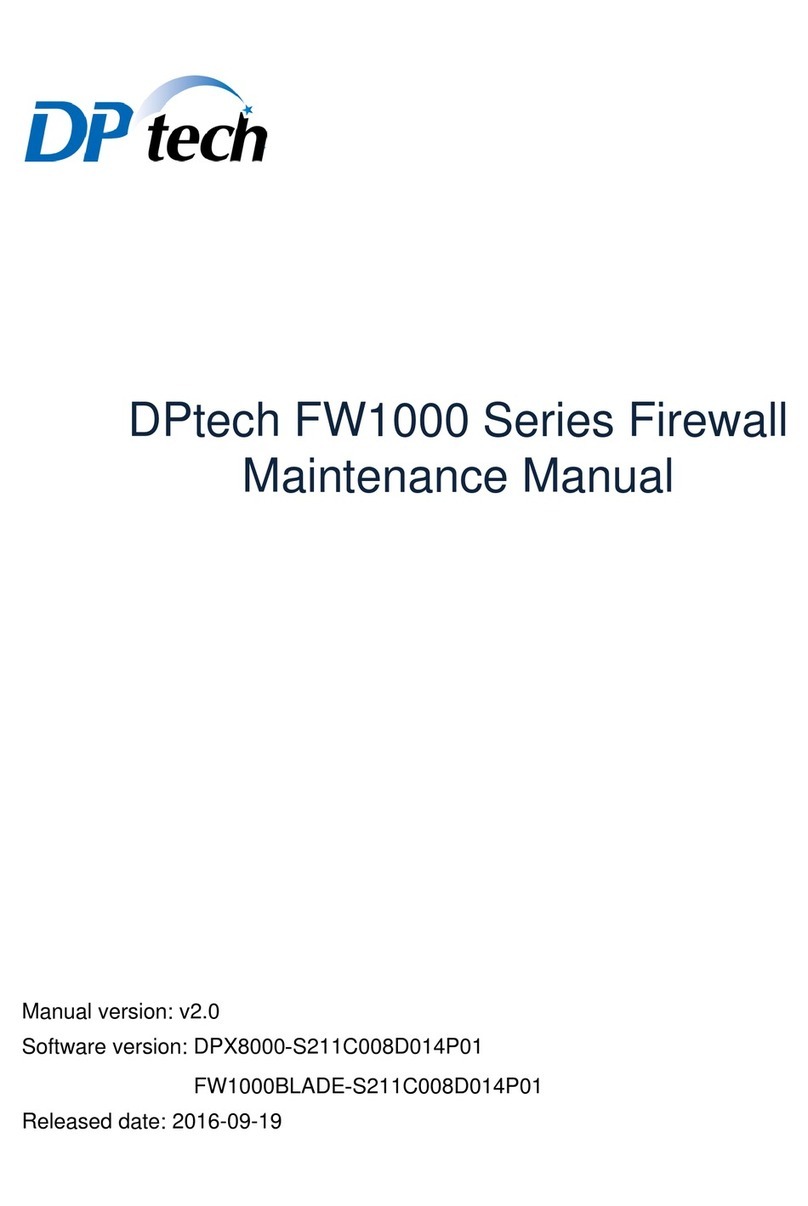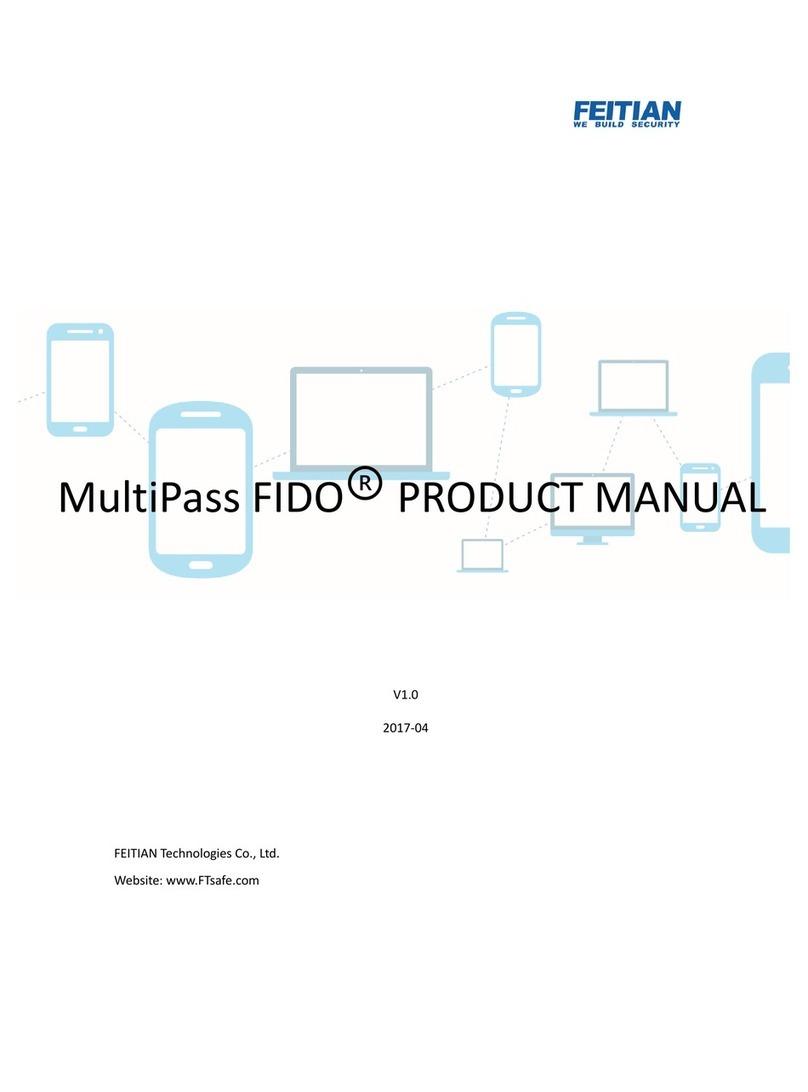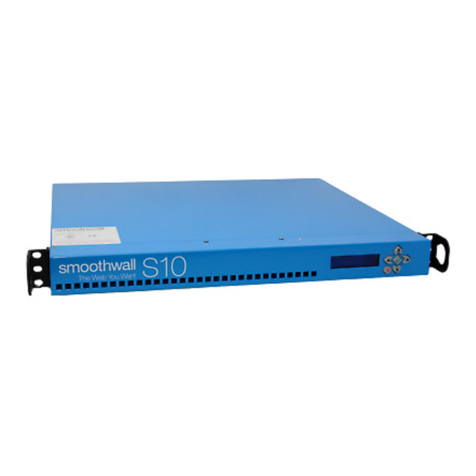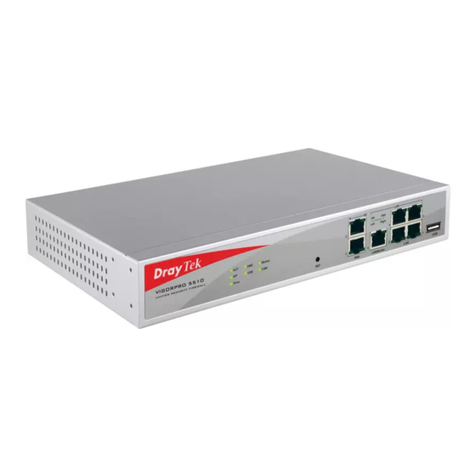
Item Code: NVEQ34448/100419
Define your own policies and test
your deployment.
Activate and update the device.
Ensure that the device can connect to the Internet and then activate
your license. After activation, you will be able to perform updates.
To activate and update your device:
1. If necessary, configure proxy server settings so the device can
connect to the Internet. Click Proxy Settings in the
Administration menu.
2. Activate the device license. Click Product License in the
Administration menu.
3. If you are using a Control Manager server as a local update
server, specify the URL of the server so the device can download
updates from this server. Click Update Source in the Updates
menu.
4. Perform an update of Network VirusWall Enforcer pattern and
program files. Click Manual in the Updates menu. You may need
to reset the device after the update.
5. Schedule automatic pattern and engine updates. Click Scheduled
in the Updates menu.
After updating components, you can create multiple policies directed
at different types of endpoints and traffic. You can define policies for
different IP address ranges, ports, and users. If you have multiple
policies, only the first policy that matches an endpoint will apply to
the endpoint. During policy creation, you will also need to define how
you will deploy the Threat Management Agent and how often
endpoints are assessed for compliance.
To get a better understanding of component updates and policy
enforcement, consult the Administrator’s Guide.
© 2010 by Trend Micro Incorporated. All rights reserved. No part of this publication may be
reproduced, photocopied, stored on a retrieval system, or transmitted without the prior written
consent of Trend Micro Incorporated. Trend Micro, Network VirusWall, Control Manager, and
the t-ball logo are trademarks or registered trademarks of Trend Micro Incorporated. All other
company and/or product names may be trademarks or registered trademarks of their owners.
Information contained in this document is subject to change without notice.
Configure the device.
You can quickly assign Network VirusWall Enforcer a fixed IP address
using the Preconfiguration console. You will need the information you
prepared in step 3.
To configure device settings:
1. On the Main Menu of the Preconfiguration console, select Device
Settings.
2. Type a host name that properly represents the device in the network.
3. Type or select the necessary IP address settings.
4. After specifying the device settings, select Return to main menu and
press ENTER.
5. Select Save and Log Off. A confirmation message displays.
6. Click OK.
Mount the device.
Mount the Network VirusWall Enforcer device to a standard 19-inch
four-post rack cabinet or place it on a stable surface as a
freestanding device. When mounting the device, allow at least two
inches clearance in all directions for cooling. For detailed
instructions, see the Installation and Deployment Guide.
After mounting the device, attach a VGA monitor and a keyboard to
the device. These peripherals will allow you to access the
Preconfiguration console, where you can configure the device for
network connection and remote management.
Log on to the Preconfiguration console.
To log on to the Preconfiguration console:
1. Power on the device and the attached VGA monitor. A few minutes
after powering on the device, the attached monitor will display the
Preconfiguration console. If the console does not display, press
CTRL+R.
2. To get full access to the Preconfiguration console, type the default
administrator user name and password.
User name: admin
Password: admin
Important: Before connecting the device to a power source, see the
safety information in the Dell Product Information Guide and the
device specifications in the Installation and Deployment Guide.
Note: You can register Network VirusWall Enforcer to Trend Micro
Control Manager™ from the Preconfiguration console. For
additional information about Control Manager and connecting
the device to your network, see the Administrator’s Guide.
Connect the device to the network.
After performing initial configuration, connect the device to your
network.
To connect Network VirusWall Enforcer to your network:
1. Disconnect the device from its power source.
2. Connect one end of a network cable to a port in the data
interface and the other to a segment of your network.
3. Reconnect the device to a power source and power it on.
Note: For information on selecting the right ports and specifying
interface speeds and duplex modes, see the Installation
and Deployment Guide.
Log on to the Web console and change the
default passwords.
Secure the console by immediately changing the passwords to the
default "admin", "poweruser", and "operator" accounts.
To log on to the console and change the passwords:
1. Open the Web console from a computer that can
access the device. To do this, go to the following URL using Internet
Explorer 6.0 or later:
http://<Device IP address>
2. Log on to the Web console using the default “admin” account.
User name: admin
Password: admin
3. Click Administrative Accounts in the Administration menu.
4. Click the name of the account to edit.
5. Type the new password and retype it for confirmation.
6. Click Save.
Note: When specifying an IPv6 address as part of a URL,
enclose the IPv6 address in square brackets.
Note: Use passwords that are at least 8 characters long and
a combination of upper and lower case letters, numbers,
punctuation marks, and other special characters. Avoid
using words in the dictionary, names, and dates.
6
4
5
7
8
10
9
Quick Start Guide
TREND MICRO
Network VirusWall Enforcer
1500i (R210 Series)
™
™
